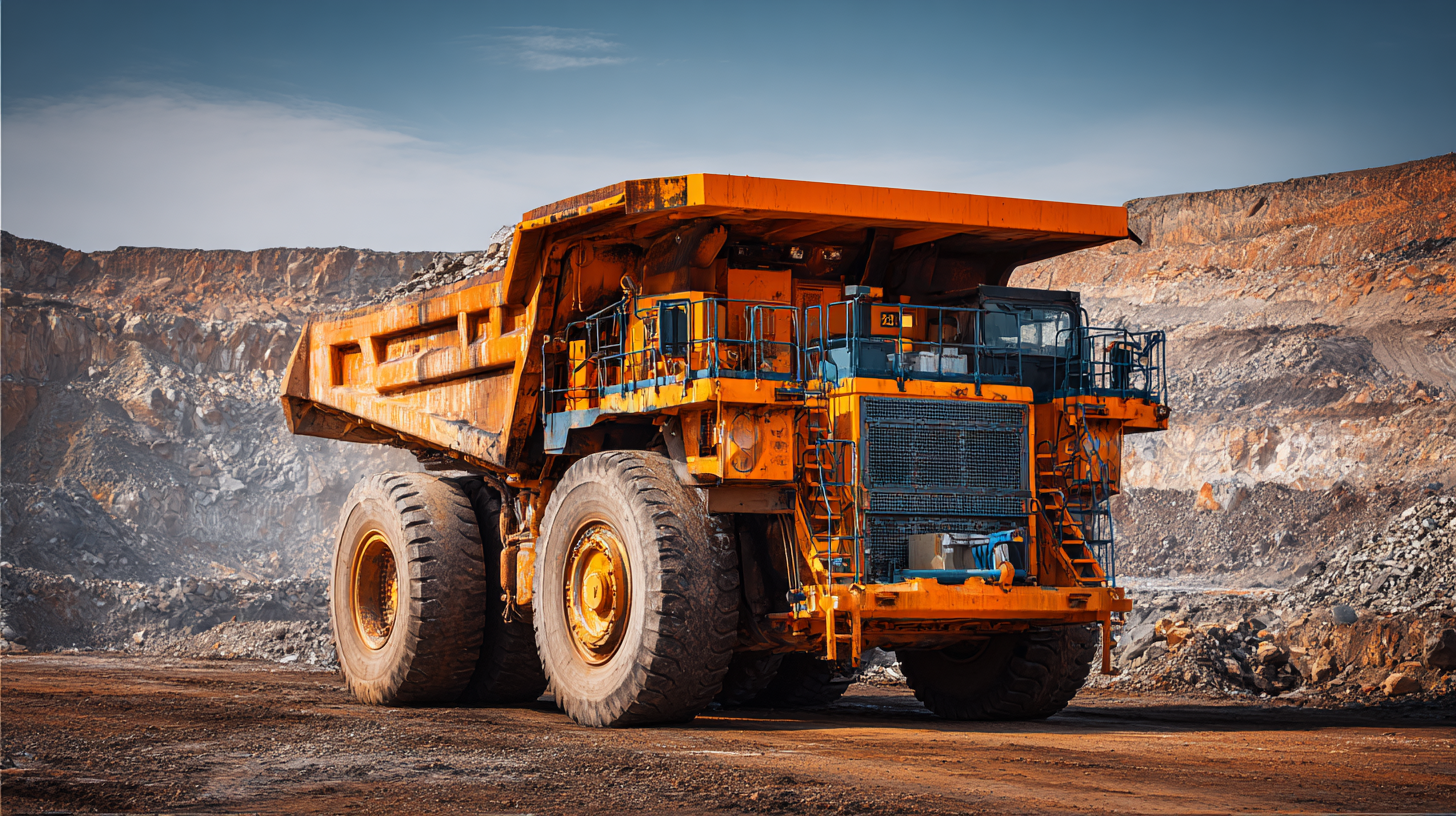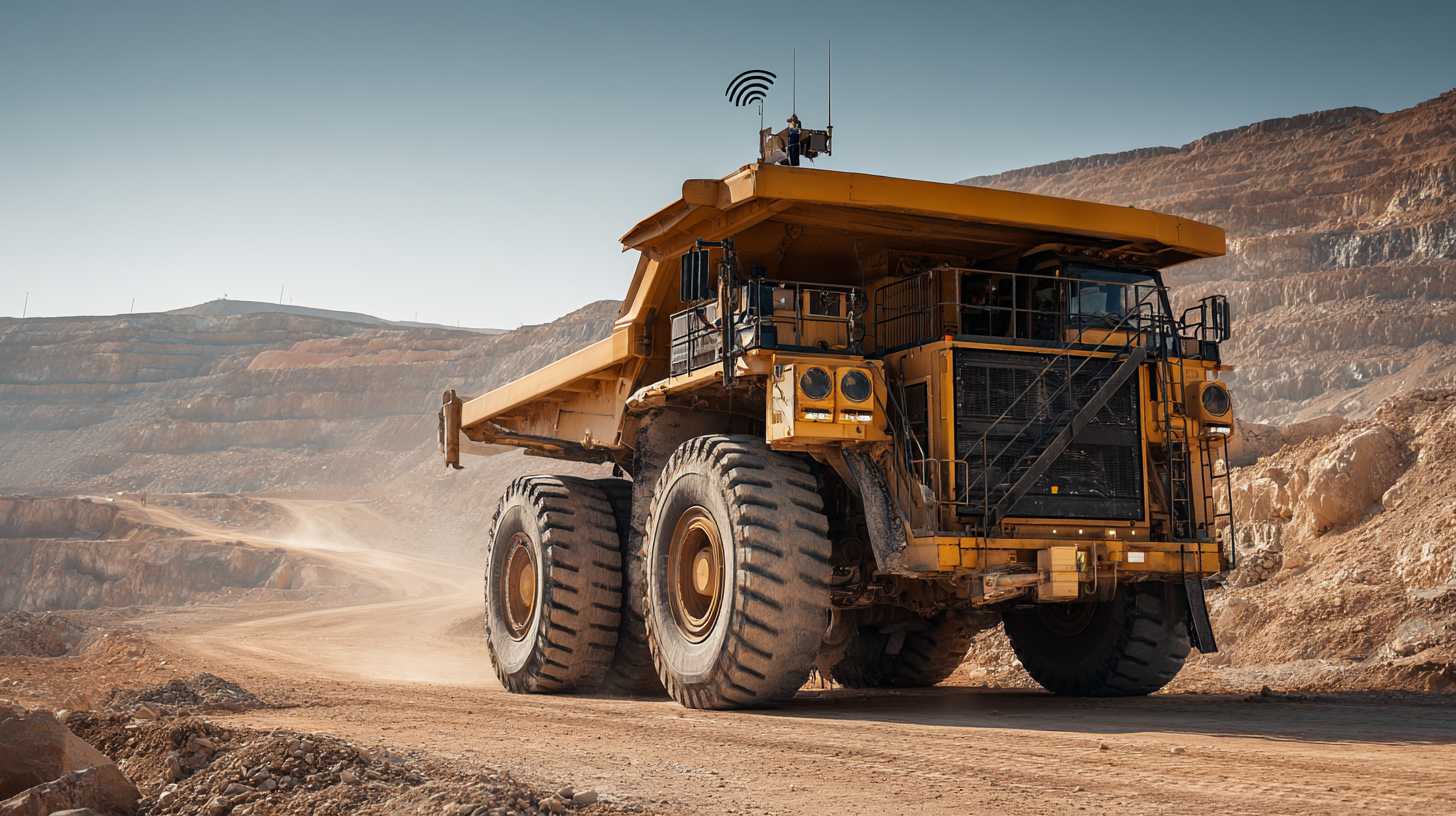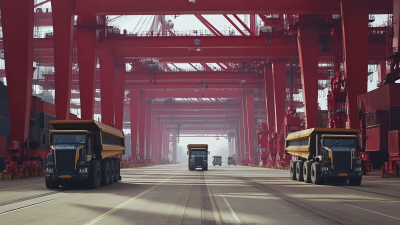In the ever-evolving landscape of mining operations, the integration of technology has become paramount in driving efficiency and productivity. Recent studies, including a report from the International Council on Mining and Metals, indicate that the mining industry is expected to see a 10-20% increase in productivity through automation by 2025. Automated Mining Trucks are at the forefront of this transformation, offering a solution to challenges such as labor shortages and safety concerns.

With the capacity to operate 24/7 under various conditions, these advanced vehicles not only enhance operational efficiency but also significantly reduce operational costs. As companies strive to optimize their operations, understanding the full potential of Automated Mining Trucks is essential for achieving maximum efficiency and ensuring a competitive edge in the market.
The autonomous trucking sector is gaining significant traction within the mining industry, with the global market anticipated to grow from $39.46 billion in 2024 to approximately $86.78 billion by 2032. This surge highlights the increasing adoption of automated mining truck technology, which is transforming operational efficiencies. In particular, autonomous haul trucks are a crucial element of the broader mining automation market, projected to reach $8.4 billion by 2035, growing at a compound annual growth rate (CAGR) of 6.4%. This growth reflects the industry's focus on integrating advanced automation technologies to enhance safety and productivity.
In 2023, significant innovations in mining technologies are being embraced, from AI-driven mine planning to enhanced remote operations. The arrival of these technologies signals a shift toward more efficient and safer mining practices. The upcoming bauma 2025 exhibition is expected to showcase new construction equipment, emphasizing advancements in electrification and hydraulics, further underscoring the trend towards automation in the sector. As companies continue to invest in automated mining solutions, the potential for increased productivity and reduced operational costs becomes increasingly evident, setting the stage for a transformative era in mining operations.
| Feature | Description | Benefit |
|---|---|---|
| Autonomous Navigation | Equipped with GPS and advanced sensors to navigate terrain. | Reduces operational costs by minimizing the need for human drivers. |
| Real-time Data Analytics | Collects and analyzes data on load weights, fuel efficiency, and routes. | Improves decision-making by providing insights into operational efficiency. |
| Remote Monitoring | Allows operators to monitor truck performance remotely. | Enhances safety and responsiveness to operational issues. |
| Automatic Load Optimization | Adjusts load distribution for optimal weight management. | Increases fuel efficiency and reduces wear on trucks. |
| Advanced Safety Systems | Includes collision avoidance and emergency braking technologies. | Reduces accidents and improves worker safety on-site. |
Implementing automated mining trucks brings numerous benefits that can significantly enhance operational efficiency. First and foremost, these advanced vehicles are designed to operate continuously without the need for breaks, unlike human-operated trucks. This capability allows for a more streamlined workflow, increasing productivity by ensuring that material transportation occurs around the clock. Reduced human fatigue and the elimination of shift changes mean that the mining operations can achieve higher output levels over extended periods.
Additionally, automated mining trucks offer improved safety in hazardous environments. With the capacity to operate remotely or autonomously, these trucks minimize the risk of accidents that can occur due to human error. This not only protects workers but also reduces downtime caused by safety incidents. Furthermore, the integration of real-time data analytics into these systems enables operators to monitor performance efficiently, make data-driven decisions, and optimize routing, resulting in lower operational costs and improved resource management.

Integrating automated mining trucks into existing workflows can significantly enhance operational efficiency. According to a recent report by the International Council on Mining and Metals (ICMM), companies that adopt automation can achieve up to 30% more productivity in their mining operations. To effectively implement this technology, it is essential to conduct a thorough analysis of current workflow processes. Identifying bottlenecks and areas where automation can take over manual tasks will streamline operations and reduce downtime.
Collaboration among teams is crucial for successful integration. The World Economic Forum highlights that effective communication between automation technology providers and mining personnel can lead to a smoother transition. Training sessions should be organized to familiarize the workforce with new systems. Furthermore, data analytics can play a pivotal role in optimizing performance; by utilizing real-time data collected from automated trucks, companies can adjust their operations dynamically, improving dispatch accuracy and fuel efficiency. This proactive approach not only enhances productivity but also promotes a culture of continuous improvement within the organization.
The implementation of automated mining trucks is transforming the mining industry by significantly enhancing operational efficiency. According to a recent report by Market Research Future, the global mining automation market is expected to reach USD 3.29 billion by 2025, driven primarily by the adoption of automated vehicles. Automated mining trucks are capable of improving productivity by up to 30% while reducing operational costs by as much as 15%. This not only maximizes throughput but also minimizes the downtime associated with manual operations.
Measuring the efficiency gains from utilizing automated mining trucks involves analyzing key performance indicators such as cycle time, fuel consumption, and overall equipment effectiveness (OEE). A case study from Mining Weekly notes that companies employing autonomous trucks have reported a 25% reduction in cycle times, translating to higher quantities of material being transported in reduced hours. Additionally, fuel consumption metrics have shown a decrease of nearly 10%, showcasing a clear environmental benefit alongside financial savings. As these metrics are closely monitored, mining operations can continuously refine their processes, paving the way for innovative approaches to optimize productivity in the sector.
This chart illustrates the percentage increase in efficiency across various operations after implementing automated mining trucks. The data shows significant improvements in handling capacity, fuel efficiency, and overall output.
The future of mining operations is increasingly being shaped by advancements in automated truck technology. According to a report by Allied Market Research, the global autonomous truck market is projected to reach $1.5 billion by 2027, growing at a compound annual growth rate (CAGR) of 9.3%. This growth is largely driven by the increasing need for enhanced efficiency and safety in mining operations. Automated mining trucks are designed to minimize human intervention, which not only reduces operational costs but also mitigates safety risks associated with manual driving in hazardous conditions.

Incorporating automation into mining fleets offers substantial benefits, including improved productivity and better resource management. A study conducted by McKinsey & Company revealed that leveraging autonomous vehicles can enhance mining output by up to 30% while decreasing operational expenses by 15%. As companies invest in state-of-the-art technologies, the integration of AI and machine learning will further elevate operational capabilities. These advancements will enable more precise decision-making, real-time data analysis, and optimized routing, ultimately leading to a more sustainable and efficient mining environment.





